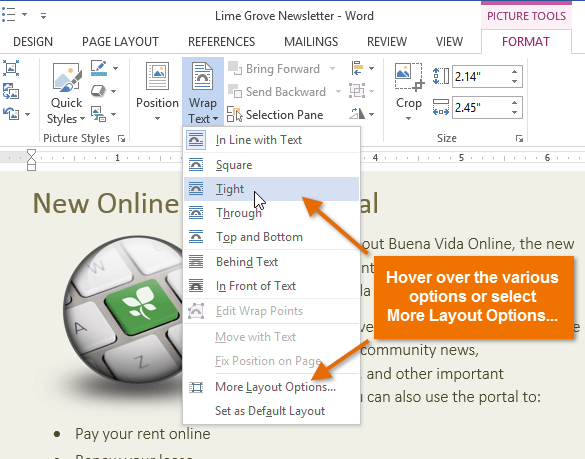

But following a few simple guidelines - such as those entertainingly illustrated by Doug Thomas in his Office Casual about how to create better presentations, or Microsoft MVP Stephanie Krieger’s 12 tips for creating better presentations - can help you create high-impact presentations without ever wrapping text in PowerPoint again. I know that no one likes to be told how to use their software. Having one or two keywords and a compelling image gets the audience’s attention - they want to find out how those elements relate. Putting less on a slide and changing slides more often helps keep the audience engaged. (If you want all the information available when you post the deck or send it in email afterward, add it to the Notes section.) You don’t need to put everything on one slide, because people will read the slide and won’t be listening to you. If you want to create a presentation, especially if you’re the person presenting it, then fewer words will work so much harder for you, especially if you add a picture, too. You can create files that people can read at their leisure. If you want to communicate a lot of words, Word is a better bet. This is an issue that we here at the PowerPoint Blog feel passionately about. Choose the wrapping options that you want to apply. If the window is wide enough, Word displays Wrap Text directly on the Picture Format tab. Go to Picture Format or Shape Format and select Arrange > Wrap Text. Since it’s hard and awkward to do, we see more comments from people who are unhappy about it than from people who say they find it helpful.īut PowerPoint works best when it has less text. Configure text wrapping around a picture or drawing object. And it isn’t easy (though we do have articles for PowerPoint 2010 and PowerPoint 2007 that discuss admittedly complicated workarounds to achieve the wrapping effect). You can try adjusting the curve but you might find that Word doesn’t have enough fine control to get the exact effect you’d like.We see a lot of questions about how to wrap text around a picture or a shape in PowerPoint. If you haven’t already inserted your object into your Word document, go ahead and do that now. RELATED: How to Wrap Text Around Pictures and Other Illustrations in Microsoft Word. ‘No Fill’ transparency will let you place the text box over the object without hiding the object underneath.Īs you can see, the text curve doesn’t exactly match the smiley face curve. To get text to appear on top of an illustration, you change the text wrapping option on the illustration so that it appears behind your text. Now I want to wrap text around the picture, but when I do so the caption moves along with the body text. If you’ll be editing the document regularly, rename the objects to clearer names then just ‘Text Box …’ etc.įor a circular object, make a curved text box with a ‘No Fill’ or transparent background. I have a picture in my document, aligned flush left, and I've placed the caption under the picture. Tip: group the four text boxes together in the selection pane to make management easier. Smart users will make just two boxes (top and left), position and format them then copy those two for the matching bottom and right boxes. Then drag each box to its exact position.

Use the Insert | Text Box | Draw Text Box option to roughly place the four boxes around the object. Here’s a chart with four text boxes around it. Putting text around a box requires four separate text boxes, positioned and grouped around the object. Thanks for joining us! You'll get a welcome message in a few moments.Ĭontinuing from our look at putting Word text vertically, at an angle or curved here’s how to put text around an object image, chart, shape or other Word object.


 0 kommentar(er)
0 kommentar(er)
